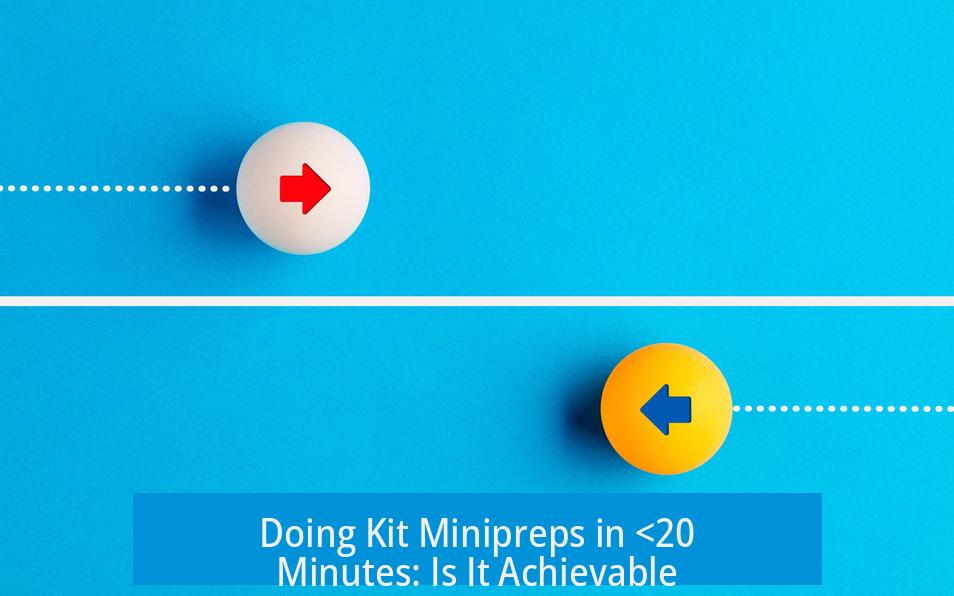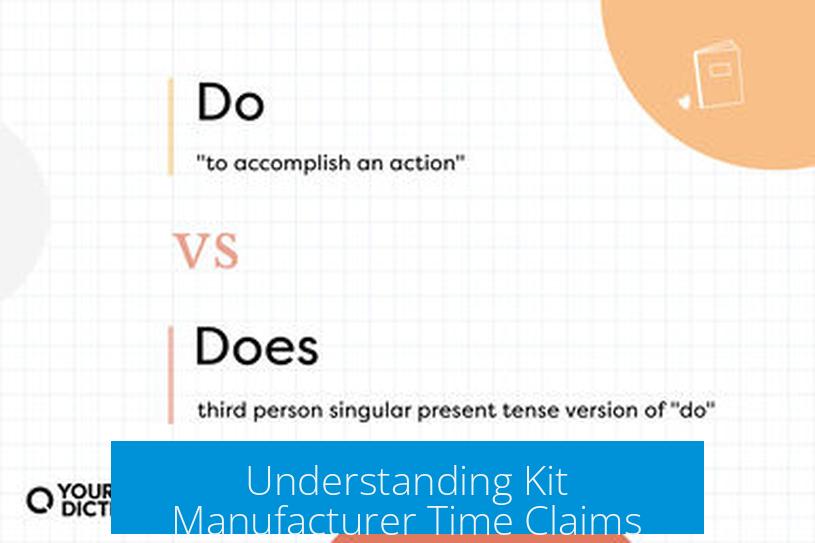Doing Kit Minipreps in <20 Minutes: Is It Achievable?

Performing a single miniprep using a commercial kit in under 20 minutes is feasible for a trained individual, but processing multiple samples in that timeframe is generally unrealistic. Manufacturers often advertise rapid miniprep kits with a total run time near 20 minutes per sample. However, this estimate usually excludes preparatory steps like bacterial pellet collection, which adds considerable time. Additionally, completing several minipreps simultaneously within 20 minutes clashes with practical limitations such as centrifugation cycle lengths and handling efficiency.
Understanding Kit Manufacturer Time Claims

Kits commonly claim to deliver plasmid DNA in 20 minutes or less. This timing pertains to an experienced user processing a single sample following the protocol’s core steps. For example, some users report completing one prep in about 15 minutes with experience. These durations typically exclude initial steps such as growing and pelleting bacterial cultures, which require additional centrifugation time and handling.
Time estimates mainly reflect the active kit procedure rather than total sample preparation. For instance, centrifugation after bacterial lysis and washing often involves spins lasting several minutes each, which accumulate rapidly when handling batches.
Why Processing Multiple Minipreps in 20 Minutes Is Challenging
- A trained technician can complete about 12 preps in 30 to 45 minutes with streamlined workflow.
- Attempts to complete 12 minipreps in just 20 minutes are unrealistic due to unavoidable centrifugation and handling times.
- Equipment limitations, such as centrifuge capacity, cause additional delays if multiple runs are required.
- Time savings from skipping or shortening critical steps can compromise DNA yield and quality.
In practice, expect around 30 to 40 minutes to process a dozen samples efficiently, given conventional bench-scale equipment. Such timelines allow adequate centrifugation, washing, and resuspension steps without sacrificing product quality.
Centrifugation as a Principal Time Bottleneck
Centrifugation spin times fundamentally limit the speed of the miniprep process. Protocols typically include:
- A 10-minute spin to pellet bacterial cultures before lysis
- A 10-minute post-lysis spin to clarify the lysate
- Additional brief spins (1-5 minutes) during washing and elution steps
Reducing spin time can accelerate the process, but bringing total centrifugation under 10 minutes usually conflicts with most kits’ requirements for sufficient pelleting and debris removal. Some kits specify shorter spins, such as 3 minutes at a time, but still require multiple cycles. The cumulative spins alone approach or exceed 20 minutes.
Using a vacuum manifold system can cut centrifugation steps for binding and washing. Vacuum enables rapid filtration through spin columns without long spins but does not speed up culture pelleting. It offers moderate time savings but is not a universal solution.
Steps That Influence Total Time and Efficiency
| Step | Typical Duration | Time-Saving Tips |
|---|---|---|
| Bacterial Pellet Spin | ~10 minutes | Use high-speed short spins (~20 seconds at 11,000 rpm) if possible; avoid over-pelleting to ease resuspension |
| Resuspension | 1–2 minutes | Ensure complete resuspension by pipetting or gentle vortex; incomplete resuspension lowers yield |
| Lysis | 1–2 minutes | Invert quickly but avoid vortexing; with some kits (e.g., Zymo), prolonging lysis beyond 2 minutes reduces yield |
| Clearing Lysate Spin | 3–5 minutes | Follow kit protocol; vacuum manifold may reduce spin time here |
| Wash Steps | 3–5 minutes total | Omit PB wash if bacteria are standard lab strains; reduce washes from three to two with a longer incubation before final spin |
| Elution | 1–5 minutes plus incubation | Preheat elution buffer to ~65°C and incubate columns for 1 minute before spinning to increase yield |
Impact of Speed on DNA Yield
Working rapidly on minipreps does not usually cause reduced yield if proper technique is maintained. Key points include:
- Inadequate resuspension or poor lysis from rushing can lower DNA recovery.
- Prolonged lysis beyond recommended times risks shearing genomic DNA and yield loss.
- Failures often result from protocol deviations rather than mere pace of work.
- Yield problems more commonly relate to elution conditions or cell strain variability rather than speed.
Maintaining controlled timing during critical steps like lysis and elution is more important than total process duration. Working faster with good technique can maintain yield.
Practical Recommendations to Optimize Miniprep Speed Without Sacrificing Quality
- Streamline bacterial culture pelleting by optimizing spin time and speed for quick, clear pellets.
- Use mechanical aids such as multichannel pipettes or stepper pipettors to speed reagent additions.
- Employ vacuum manifold filtration if available to replace centrifugation during binding and washing.
- Skip unnecessary washing steps if compatible with strain and plasmid chemistry.
- Preheat elution buffer and incubate columns to maximize DNA recovery in minimal spins.
- Train to handle samples efficiently and complete necessary steps without delays.
With these strategies, one can typically achieve 12 minipreps in about 30–40 minutes, balancing speed and yield.
Managing Expectations and Realistic Timelines
Supervisors may assume that advertised kit times reflect realistic timelines for work involving multiple samples. In practice, the expectation to process many minipreps under 20 minutes is usually impractical due to protocol constraints and equipment limitations.
Laboratory managers and principal investigators should consider:
- Recognizing hands-on pipetting and centrifugation impose unavoidable time requirements.
- Respecting that rushing steps can reduce clarity, increase errors, and compromise results.
- Allowing realistic timeframes that ensure accurate, reproducible DNA purification.
- Valuing training and technique over speed pressure to maintain scientific quality.
Science avoids awards for fastest prep. Efficiency grows with practice but remains bounded by biochemical and physical limits.
Alternative Methods and Kit Comparisons
Some kits, like those from New England Biolabs, advertise faster protocols with shorter spins (e.g., max 5 minutes) and minimal incubation. Users report completing small batches in ~30 minutes. Alternative approaches such as classical alkali plasmid extraction take longer but sometimes yield more DNA.
Vacuum manifold systems may accelerate filtering but require compatible columns and vacuum pumps. Adopting alternative prep methods depends on yield requirements, sample throughput, and available equipment.
Key Takeaways
- Single miniprep kits can be completed in under 20 minutes by experienced users. This excludes bacterial culture pelleting time.
- Processing multiple samples within 20 minutes is unrealistic. Twelve preps usually require 30–45 minutes.
- Centrifugation cycles are major time constraints and cannot be significantly shortened without impacting results.
- Vacuum manifold systems and procedural optimizations can reduce but not eliminate time bottlenecks.
- Rushing steps risks yield loss if resuspension or lysis is inadequate.
- Preheating elution buffer and optimizing wash steps improve DNA recovery efficiently.
- Realistic managerial expectations and respect for technique improve productivity and data quality.





Leave a Comment